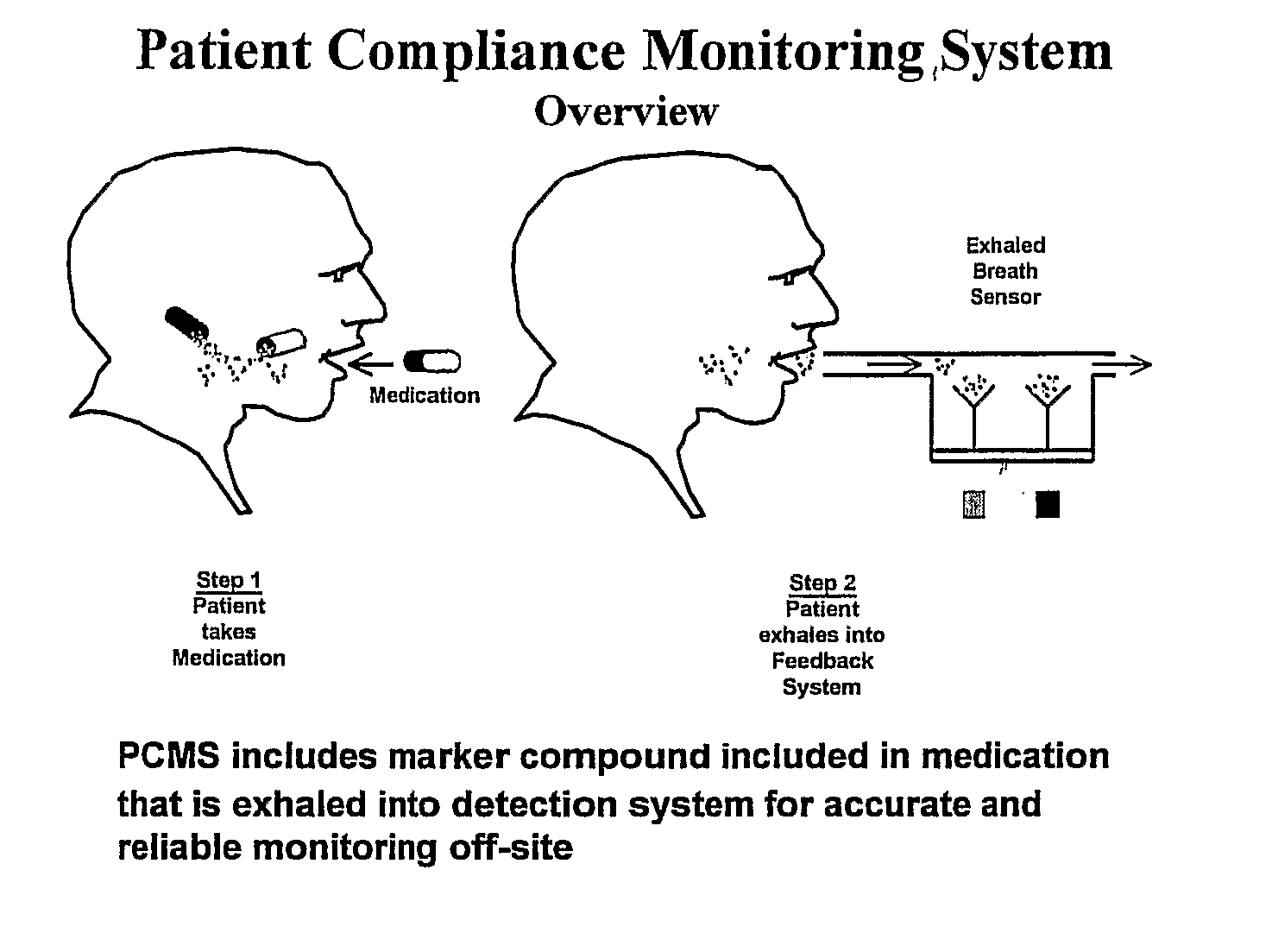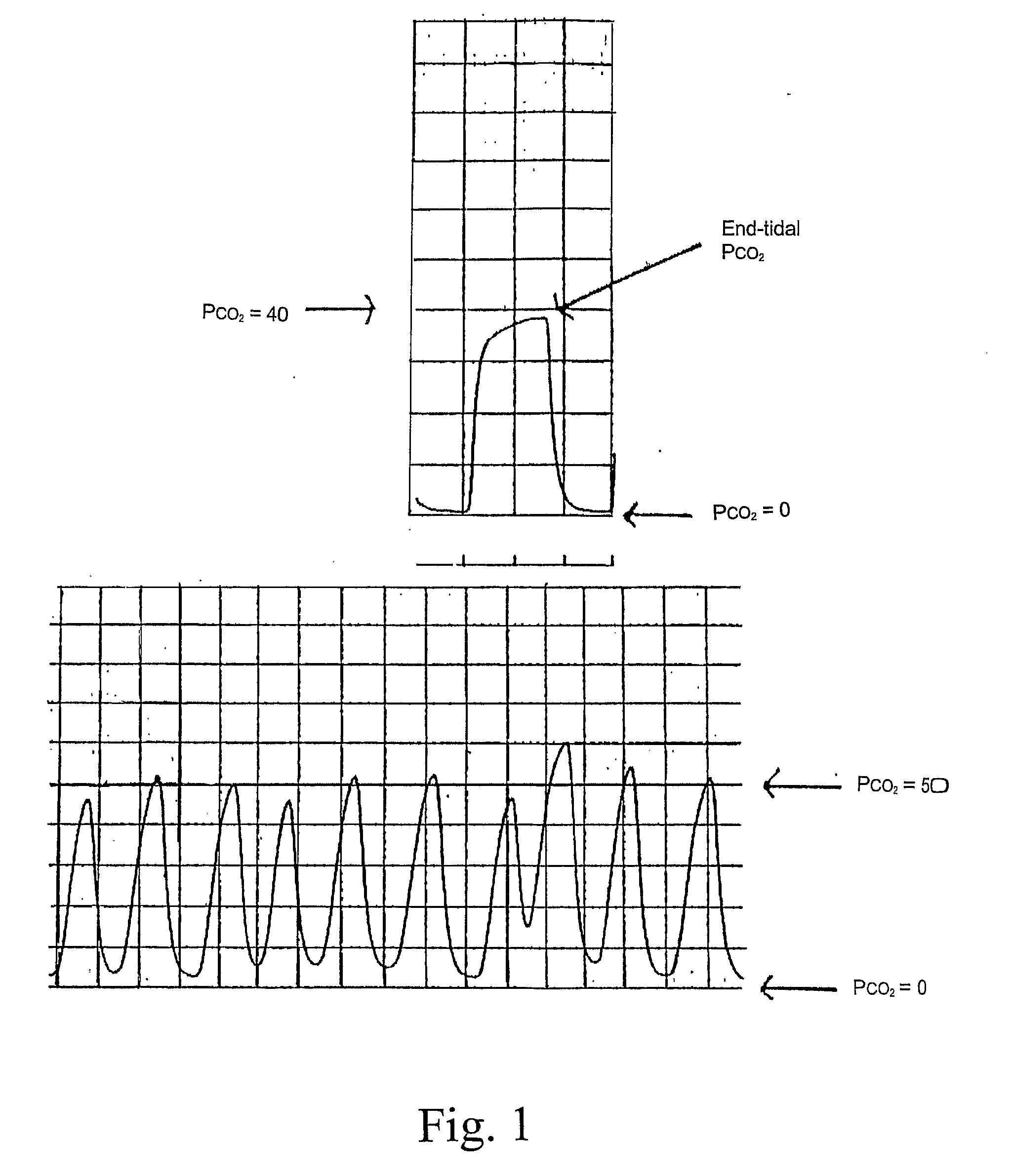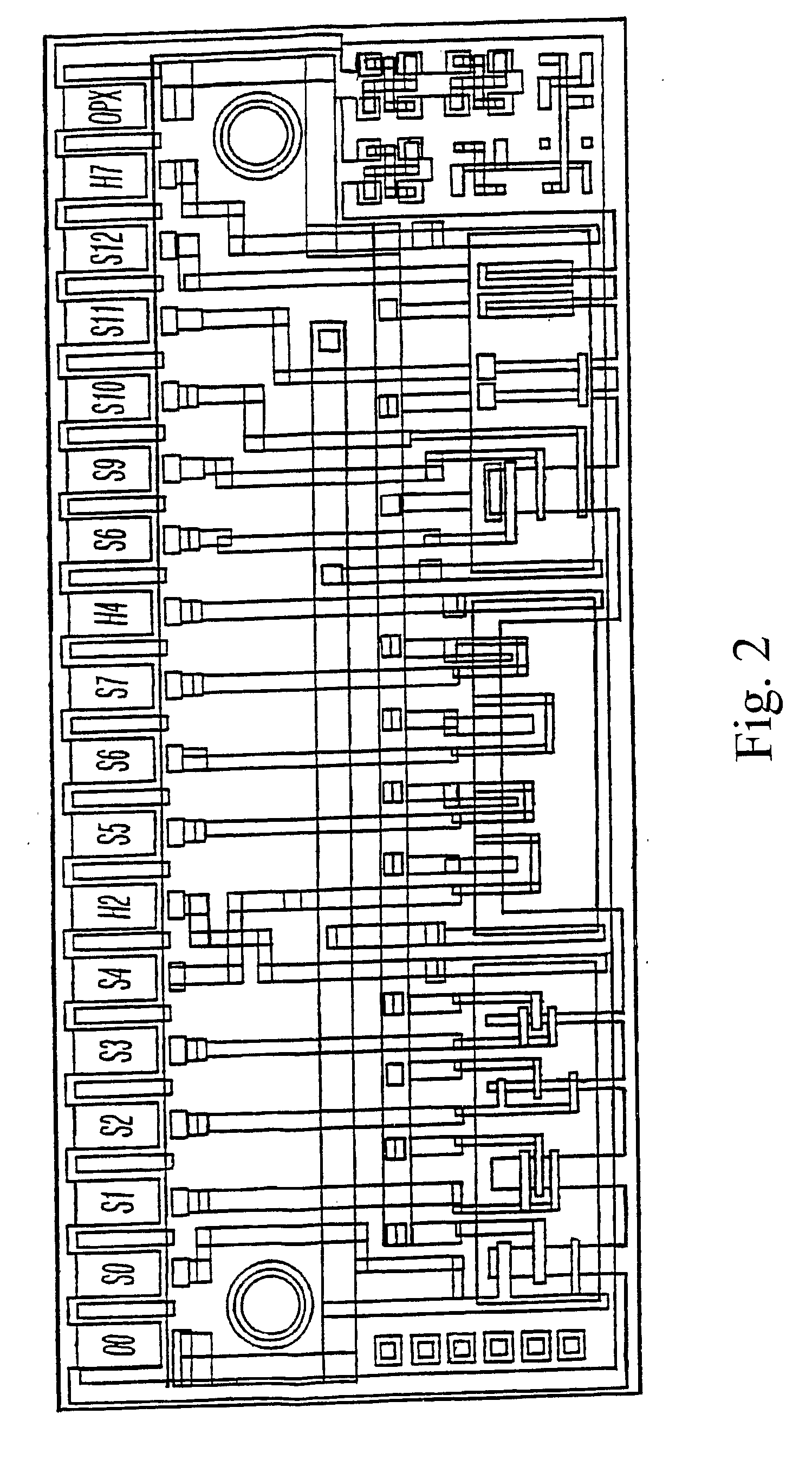System and Method for Real-Time Diagnosis, Treatment, and Therapeutic Drug Monitoring
- Summary
- Abstract
- Description
- Claims
- Application Information
AI Technical Summary
Benefits of technology
Problems solved by technology
Method used
Image
Examples
example 1
Systems and Methods for Testing Heroin Use
[0226] In one embodiment, a patient suffering from heroin addiction is administered a composition comprising nanoparticle-based assemblies of the invention. The nanoparticle-based assemblies are designed to detect the drug heroin. In one embodiment, the nanoparticle-based assemblies contain a nanoparticle, a surrogate marker, and an SCE-detector. Preferably, the SCE-detector is an aptamer that is designed to be specific for heroin (heroin-aptamer). The heroin-aptamer and the surrogate marker (heroin-surrogate marker) are attached to a surface of the nanoparticle.
[0227] In a preferred embodiment, the heroin-aptamer is attached to an end-cap of a hollow nanoparticle that contains therein the heroin-surrogate marker. The heroin-aptamer is designed so that upon interaction with heroin, the end-cap is released from the nanoparticle to release the heroin-surrogate marker. The heroin-surrogate marker is readily detectable in bodily fluid samples ...
example 2
Treatment of Atherosclerosis
[0229] In another embodiment of the invention, a patient suffering from atherosclerosis is administered a composition comprising nanoparticle-based assemblies to diagnose and treat atherosclerosis. The nanoparticle-based assembly comprises a nanoparticle; a surrogate marker; a payload; and an SCE-detector. Treatment of atherosclerosis (payload) comprises anti-oxidant genes (MnSOD, HO-1 and PON1) that utilize the patient's own hormonal changes to offset atherosclerotic disease progression. The SCE-detector is designed to detect biomarkers of atherosclerosis (i.e., ICAM-1, VCAM-1, or LOX-1). ICAM-1, VCAM-1, and LOX-1 are pro-atherogenic genes in human coronary endothelial cells that are regulated by cytokine levels (IL1, TNF, IL-6).
[0230] Once the SCE-detector is in the presence of an atherosclerosis biomarker, it causes the release of the anti—oxidant genes and the surrogate marker. The antioxidant genes not only alter the development of atherosclerosis ...
example 3
Diagnosis and Treatment of Glycogen Storage Disorder
[0231] Glycogen is readily detectable in bodily fluids (i.e., blood) using a nanoparticle-based assembly of the invention. According to the present invention, the nanoparticle-based assembly comprises a nanoparticle, a surrogate marker, and an SCE-detector that is designed to bind to the glycogen and to act upon the glycogen in a fashion similar to muscle phosphorylase to safely break down glycogen. Binding of the SCE-detector to glycogen causes the release of the surrogate marker for detection. Thus, with the present invention, it is possible to not only diagnose a specific disease / condition in a patient but also to treat it and ensure patient compliance with the treatment regimen. In addition, the method of the present invention can evaluate pharmacodynamics and pharmacokinetics for drug interventions in individuals.
PUM
 Login to View More
Login to View More Abstract
Description
Claims
Application Information
 Login to View More
Login to View More - R&D
- Intellectual Property
- Life Sciences
- Materials
- Tech Scout
- Unparalleled Data Quality
- Higher Quality Content
- 60% Fewer Hallucinations
Browse by: Latest US Patents, China's latest patents, Technical Efficacy Thesaurus, Application Domain, Technology Topic, Popular Technical Reports.
© 2025 PatSnap. All rights reserved.Legal|Privacy policy|Modern Slavery Act Transparency Statement|Sitemap|About US| Contact US: help@patsnap.com



